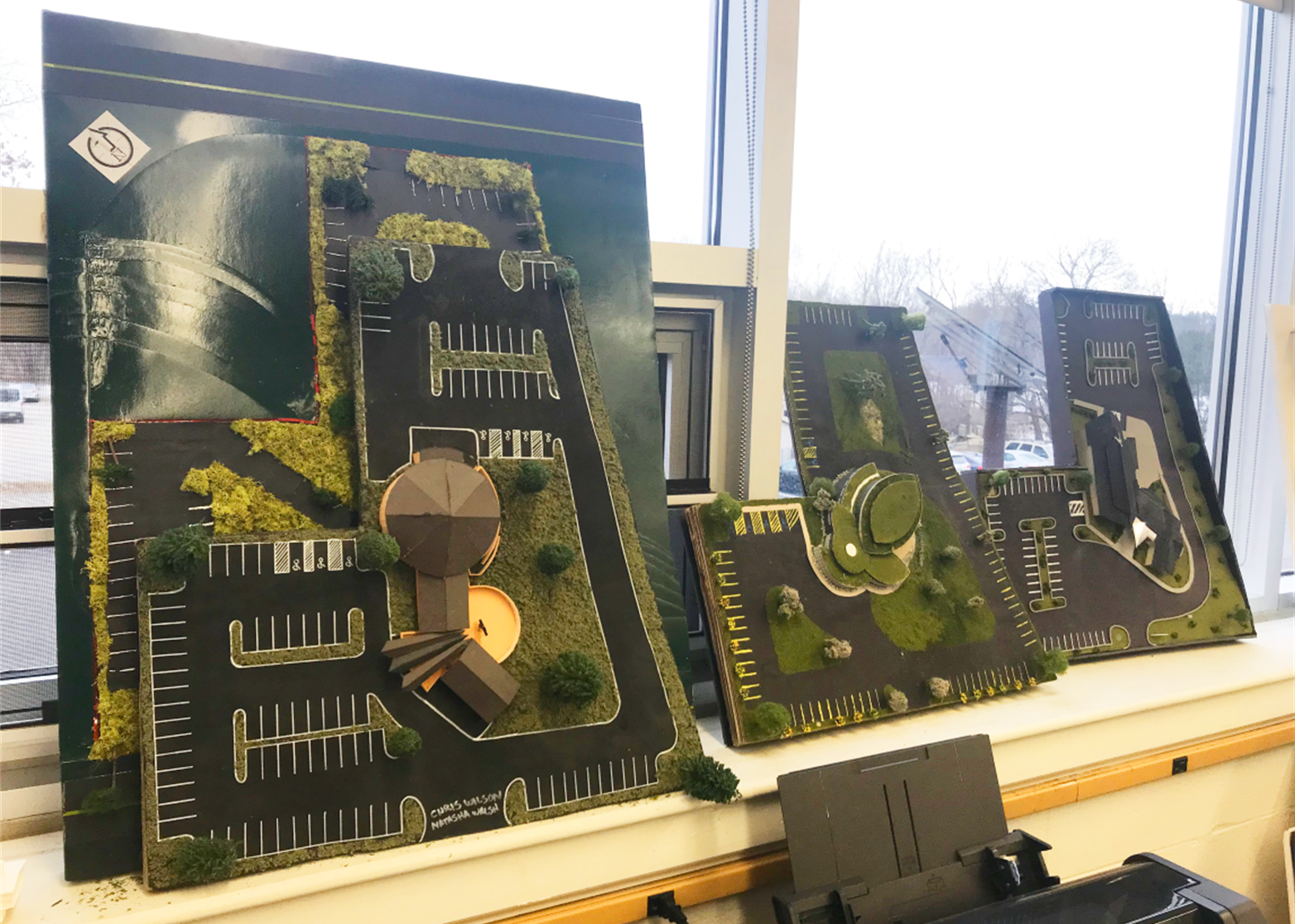 NHTI's Architectural Engineering Technology degree program combines architecture and engineering theory with applied hands-on activities in NHTI labs. You'll study architectural design and engineering processes and develop skills in design, sketching, engineering, and computer-aided design (CAD) and visualization. You'll learn from dedicated and experienced faculty and acquire knowledge about industry practices and culture through a unique guest speaker program. The ARET program offers:
NHTI's Architectural Engineering Technology degree program combines architecture and engineering theory with applied hands-on activities in NHTI labs. You'll study architectural design and engineering processes and develop skills in design, sketching, engineering, and computer-aided design (CAD) and visualization. You'll learn from dedicated and experienced faculty and acquire knowledge about industry practices and culture through a unique guest speaker program. The ARET program offers:
- A strong reputation for excellence
- Lecture and lab hands-on experience with small classes
- Exciting job opportunities at graduation
- First two years of a four-year education
- Day and evening classes
Do you have questions? The department chair for this program is Dan Shagena, who can be reached at dshagena@ccsnh.edu.
Apply for this program today on our Admissions page with step-by-step instructions and enrollment pathways build just for you!
Applicants are required to have at least three years of college preparatory math (Algebra I, Algebra II, and Geometry) with minimum grades of C. It is strongly recommended applicants have completed high school courses in Chemistry and Physics.
Graduates work in architectural firms, engineering firms, and construction companies; some choose to work for architects, engineers, contractors, or government agencies. They can also pursue educational and career advancements while working full time in the industry. ARET students are eligible to take the Fundamentals of Engineering exam, open to anyone who has a degree in engineering or a related field or is currently enrolled in the last year of an ETAC of ABET-accredited engineering degree program.
First Year
Fall Semester
Spring Semester
Second Year
Fall Semester
Spring Semester
Second Year: Civil Focus
Fall Semester
Spring Semester
Accreditation
This program is accredited by the Engineering Technology Accreditation Commission of ABET, www.abet.org.
Program Learning Outcomes
ETAC of ABET General Criterion 3 Student Outcomes:
- An ability to apply the knowledge, techniques, skills, and modern tools of the discipline to narrowly defined engineering technology activities
- An ability to apply a knowledge of mathematics, science, engineering, and technology to engineering
technology problems that require limited application of principles but extensive practical knowledge - An ability to conduct standard tests and measurements, and to conduct, analyze, and interpret experiments
- An ability to apply written, oral, and graphical communication in both technical and nontechnical environments and an ability to identify and use appropriate technical literature
- An understanding of and a commitment to address professional and ethical responsibilities, including a respect for diversity and a commitment to quality, timeliness, and continuous improvement
ETAC of ABET Program Criteria for Architectural Engineering Technology and Similarly Named Programs Outcomes:
- Employ concepts of architectural theory and design in a design environment
- Utilize instruments, methods, software, and techniques that are appropriate to produce A/E documents and presentations
- Utilize measuring methods that are appropriate for field, office, or laboratory
- Apply fundamental computational methods and elementary analytical techniques in sub disciplines related to architectural engineering
Program Educational Objectives (PEOs): The ARET PEOs are broad statements that support the mission of the ARET program and NHTI. The ARET department’s mission reflects on the following PEOs. Graduates are able to:
- Be effective life-long learners and demonstrate continuing professional development.
- Demonstrate the ability to solve problems and participate in a team based environment.
- Demonstrate effective communication and interpersonal skills.
- Exhibit an active and effective civic life with respect for diversity and local and global issues.

